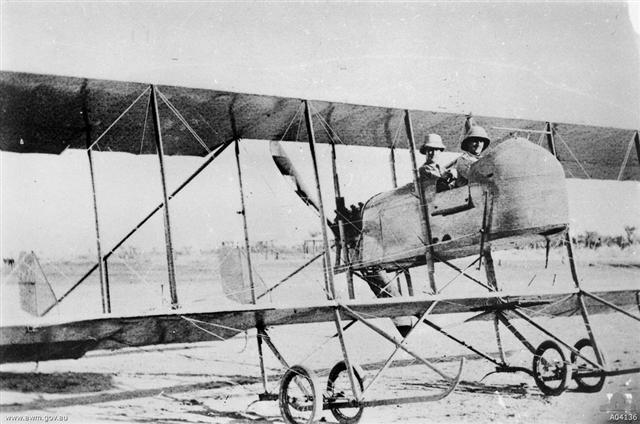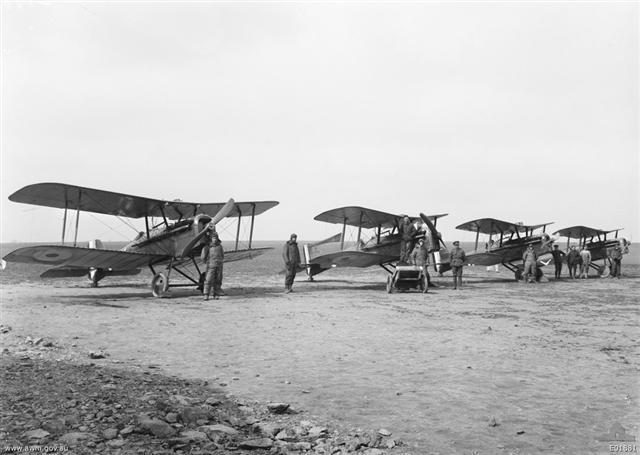The Australian War Theatres
Australian airmen served overseas from the earliest days of the First World War. Two pilots were sent to New Guinea in 1914, but were not needed. The following year a group, to become known as the Mesopotamian half-flight, went to the Middle East and were absorbed into the Royal Flying Corps. Here, in a disastrous campaign for the British against the Turks, the Australian Flying Corps suffered its first casualties and some of the men were taken prisoner.

Two unidentified members of the Mesopotamia Half Flight seated in a Maurice Farman Shorthorn aircraft in 1916.
In early 1916 the first complete Australian squadron, No.1 Squadron AFC, left for Egypt. From there in the Sinai and Palestine, the squadron gave outstanding service and brought to the fore some of our finest airmen.

No. 1 Squadron, AFC lined up with their Bristol F2B and B.E.2E Aircraft in Palestine, February 1918.
A similarly important role was played by three more front line squadrons (Nos. 2, 3, and 4 Squadrons AFC) that had arrived in England by 1917 and later flew in France and Belgium. Operating over the Western Front these units undertook reconnaissance and observation, photography, aerial combat, bombing and ground attacks.

Four SE5 Biplanes and men of C Flight, No 2 Squadron, AFC lined up on a makeshift airfield in France, 25 March 1918.

An R.E.8 aircraft, serial number A3662, ‘J’, in the grounds of No. 3 Squadron’s airfield at Bailleul, 30 November 1917.

France, 24 March 1918. A flight of Australian Scouting Machines, Sopwith Camels, from No. 4 Squadron, AFC.
A further four Australian training squadrons (Nos 5, 6, 7, 8) were also stationed in England. Visit our website to find out more about AFC Training.

Overhauling rotary aircraft engines inside the engine repair shop at the Australian aerodrome used by No. 5 (Training) Squadron and No. 6 (Training) Squadron, AFC, Minchinhampton, England.

Interior view of a hangar used by No. 7 (Training) Squadron, AFC and No. 8 (Training) Squadron, AFC, at their aerodrome at Leighterton. Avro 504K trainer aircraft of No. 7 Squadron fill the hangar.